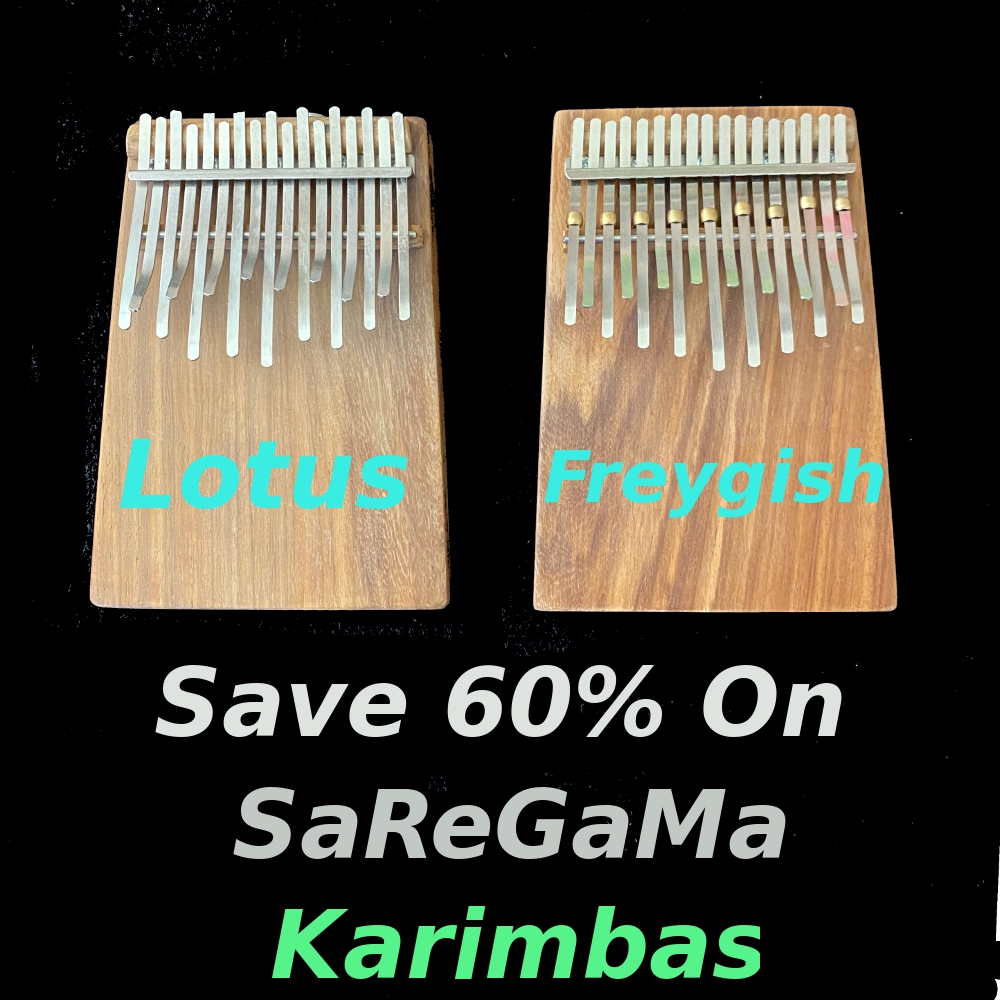
Use of this website constitutes acceptance of the Privacy Policy and User Agreement. Copyright © 2020 Kalimba Magic. All Rights Reserved.
Kalimba Magic started making the first alternative sansula tunings many years ago, and we are the only people to have made instructional materials for the sansula and its alternative tunings. This series of tips is an overview of Kalimba Magic’s sansula tunings and related instructional materials.
To gain some perspective, we take a close look at where the Sansula started – the standard A minor tuning.
The notes of the sansula in standard tuning are shown on the left, and the roles these notes play is indicated in the numbers on the right. The “1” is the root note, or A. And look: there are three different A notes, or root notes. This means that even if you are playing randomly, you will play the “1” more often than the other notes, thereby producing music that emphasizes A as the tonal center. This is a prime example of how a tuning can stack the cards to prefer a particular musical outcome.
The “2”, or B, is the second degree of the scale. There is no “3”, but there are two tines tuned to C, or “3-” which is a flat third or a minor third. No “4”, but there are two “5” notes. No “7”, but a “6-” or minor 6th. The minor 3rd and the minor 6th give a strong minor feeling to this tuning.
There is one flash point on this kalimba: the F and the low E right next to each other – or the “5” and the “6-” which sound really bad when played at the same time. A simple strategy is to just alternate – play the E for a while, then play the F for a while. You pivot back and forth between the E and the F, which is referred to in the video below.
The sansula in the A Minor tuning is a natural at creating gorgeous, easy sounds. You can sit with it and without paying much attention, just twiddle your thumbs and beautiful noise issues forth. But there is a price for this, as there sometimes is when we get something for “free”. You see, so much freedom has been given up in order to obtain this ever-beautiful music that you have very little power to take this tuning in some other direction. You are limited to just sitting in heaven singing the praises of the Almighty. Yes, it is wonderful, but it might get boring after a while, and that is why I started inventing alternative tunings for the sansula.


Sign up for our newsletter and free resources with your email address:
We pinky promise not to spam you and to only send good stuff.
 66 Songs for the 17-Note Kalimba in C
posted on July 18, 2018
66 Songs for the 17-Note Kalimba in C
posted on July 18, 2018
 Chords on the 17-Note Kalimba in C
posted on June 21, 2019
Chords on the 17-Note Kalimba in C
posted on June 21, 2019
 How to Tune the Kalimba
posted on November 20, 2020
How to Tune the Kalimba
posted on November 20, 2020
Use of this website constitutes acceptance of the Privacy Policy and User Agreement. Copyright © 2020 Kalimba Magic. All Rights Reserved.